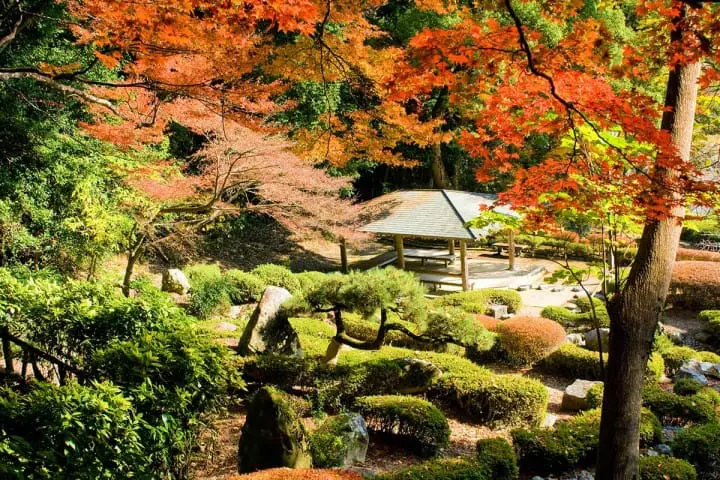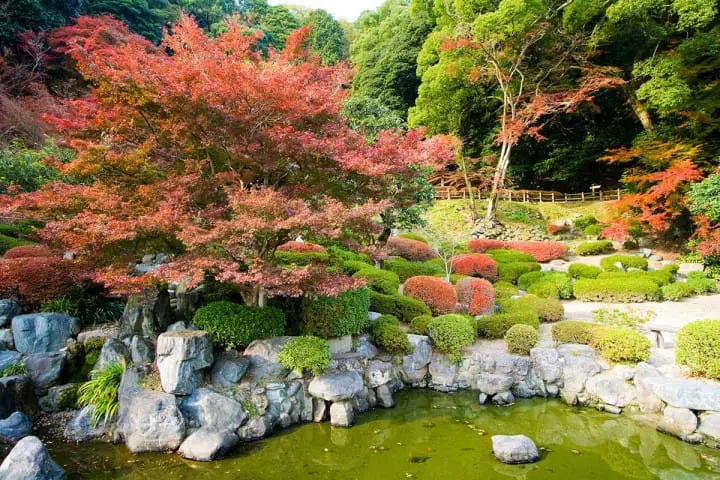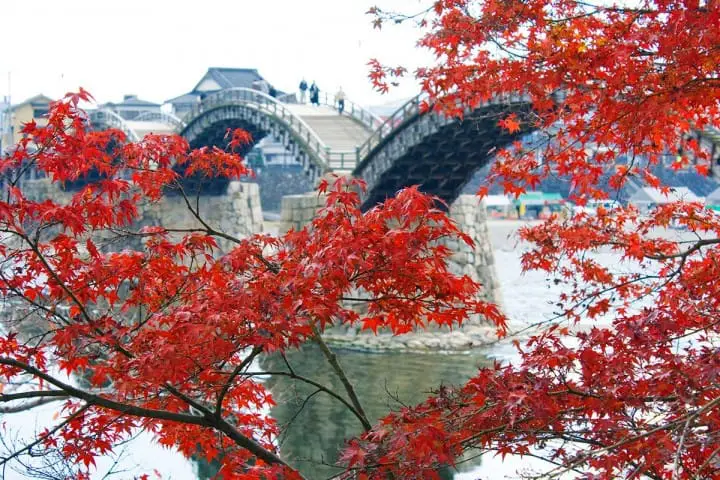Kikko Park And Kintai Bridge - The Highlights Of Yamaguchi Prefecture

Kikko Park in Iwakuni city, near the famous wooden Kintai Bridge, is home to some incredible seasonal views, including delicate cherry blossoms in spring and brilliant red maple leaves in fall.
What Is Kikko Park?
Kikko Park is a well-known cherry blossom spot, located in the Yokoyama district of Iwakuni city in Yamaguchi prefecture. This park was selected as one of the top 100 spots for cherry blossoms viewing in Japan, along with its wooden Kintai bridge.
During the Edo period, this park and its surrounding areas belonged to the daimyo who ruled the area. Within the park grounds, there were houses called the Mekatake jutaku (houses for the samurais that served the daimyo) alongside the daimyo's own residence. Near the park is the Kikko Shrine the daimyo visited, which is still standing today. You can get a better understanding of the Edo period through these structures.
This time, we would like to introduce some basic information, access routes, and highlights of Kikko Park.
Basic Information About Kikko Park

Kikko Park is open year-round and is free to enter. Why not visit when you have time?
Getting to Kikko Park
From centrally located Iwakuni Station in Iwakuni, you can get to Kikko Park by bus. You can catch the bus bound for Kintaikyo in front of the station. It takes around 15 minutes to the Kintaikyo stop and costs 300 yen. From the bus stop to Kikko Park, it is a three-minute walk.
Recommended Spots in Kikko Park
Here are some recommended spots of Kikko Park.
Mekatake Jutaku (Mekatake Samurai Residences)

These are the houses where the Mekatake family lived. They were a samurai family that served the daimyo. The house is said to be from the 18th century and was designated as an Important Cultural Property of Japan. Unlike other samurai residences, this is a rare two-story high house. The second floor facing the street has no windows. Windows were excluded from upper floors so the samurai would not be able to look down at higher-ranking samurai.
Iwakuni White Snake Museum
In this facility, not only can you see how these white snakes are raised, but you can see displays of the white snakes in Iwakuni as well. White snakes are considered to be one of Japan's national treasures. Within the museum, you can see several white snakes and learn about their ecology.
Address: Yamaguchi, Iwakuni, Yokoyama 2-6
Hours: 9:00-17:00. Open all year except for maintenance days.
Entry Fees: Adults (high school students and above) 200 yen, children (elementary and middle school students) 100 yen.
Seasonal Events of Kikko Park
Cherry Blossom (End of March to Early April)
Nearly 3000 somei yoshino cherry blossom trees, the most common kind of cherry blossom trees in Japan, bloom in the Kikko Park and Kintai Bridge area. It is considered to be one of the most popular cherry blossom viewing spots in Yamaguchi and nearly 400,000 people visit yearly.
Autumn Foliage (Late November to December)


Kikko Park is also known for the colorful leaves that form its seasonal scenery in autumn.
Aside from the cherry blossoms and leaves, you will be able to experience plum blossoms in February, iris in May, hydrangeas in June, and many flowers throughout the seasons.
Tourist Spots Around Kikko Park
Kikko Shrine

The kikko shrine is located within the park as well. It was first constructed in 1728 and then moved to its current spot in 1886.
Kinunkaku

In the shrine grounds, you will also find the Kinunkaku that is used to store wooden plaques called ema. It was constructed in 1885 and designed in a structure similar to the storage room that stored arrows in the daimyo's castle.
Kintai Bridge

Located fairly close to the Kikko Park is the Kintai Bridge. The main trait of this bridge is how it is constructed with only wood and without using any concrete or metal. Alongside the Meganebashi Bridge in Nagasaki and the Nihonbashi Bridge in Tokyo, it is considered one of the top three bridges of Japan.
For more information on Kintai Bridge, please read Kintaikyō - Crossing Five Beautiful Wooden Arches.
Iwakuni Castle
This castle is known for its unique architecture mixing Chinese and Western styles. Normally, as you go up the castle tower, the rooms gradually get smaller but the Chinese-style architecture allows the lower rooms to be smaller than the rooms on top. From Kikko Park, you can visit this castle by rope-way (550 yen for a round trip).
For details about the Iwakuni Castle, please read Iwakuni Castle, Yamaguchi - Superb Views From The Top.
** Travel times and expenses are based on publicly available information and are current as of August 2017. They may be subject to change.










































![[Coupon Available] Attention Overseas Winter Sports Fans! Nagano's Sports Depot Has Evolved](https://resources.matcha-jp.com/resize/720x2000/2026/01/05-254819.webp)